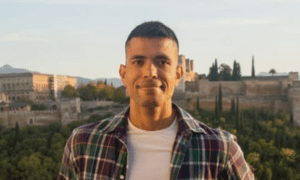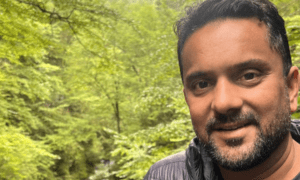Tom Diacono walked into his first engineering job at 19 without a university degree. Six and a half years later, he led engineering teams and built infrastructure that processed thousands of messages per second. His trajectory from intern to founding engineer at Y Combinator-backed Asteroid defies conventional wisdom about technical credentials, proving that hands-on problem-solving outweighs classroom theory.
Most engineers spend four years studying computer science before touching production code. Diacono started writing it immediately. His gap year internship at Wireless Logic became a masterclass in telecommunications infrastructure, where mistakes affected millions of SIM cards and downtime meant real financial consequences. He learned by building, breaking, and rebuilding until the architecture held.
Rising Through Real Problems
Wireless Logic threw complex challenges at its young intern. The company needed systems that could provision thousands of SIM cards across multiple networks with a single command. Diacono absorbed the problem, studied existing telecommunications protocols, and designed an architecture that became network-agnostic. His solution meant that when Wireless Logic acquired competitors, integration happened in days rather than months.
His progression accelerated because he solved problems others avoided. Traditional engineers might have built separate solutions for each carrier or region. Diacono created a unified platform that worked everywhere, reducing complexity while increasing capability. Management noticed. Responsibilities expanded. Teams grew under his supervision.
Leading eight people demanded different skills than writing code. Technical brilliance alone doesn’t translate to effective leadership. Diacono learned to communicate complex architectural decisions, delegate tasks that matched each team member’s strengths, and maintain velocity across multiple concurrent projects. His usage processing infrastructure monitored millions of active connections in real-time, delivering instant alerts and automatic caps when thresholds were exceeded.
Building Knowledge Through Contribution
His education continued outside office walls. Open source projects became his graduate school. The OpenTelemetry contribution he authored enables distributed tracing across Kafka for PHP—a specific technical need that most developers had struggled to address. Downloads exceeded 50,000, validating his architectural choices. Other engineers now build their monitoring solutions using the code Diacono wrote and maintained.
“I started in engineering at 19 on my gap year, and worked up from an intern to a Lead Engineer,” he explains. That journey compressed what typically takes a decade into six intensive years. Each project is built on previous knowledge. The SIM provisioning platform taught him about distributed systems. The eSIM solution forced him to master geographic routing. The usage processing infrastructure demanded real-time data handling at scale.
Universities teach theory. Production environments teach survival. Diacono’s education came from systems that couldn’t fail, customers who demanded reliability, and architectures that needed to scale. He debugged at 3 AM when the critical infrastructure went down. He optimized algorithms when processing speeds lagged. He refactored codebases when technical debt accumulated. Each crisis became a lesson that no textbook could provide.
Applying Lessons at Asteroid
Joining Asteroid as a founding engineer meant starting over—but with six years of battle-tested knowledge behind me. The browser automation space presented different challenges than telecommunications, yet his ability to architect scalable solutions transferred perfectly. He built the billing infrastructure that tracks usage minute-by-minute, allowing customers to pay only for the resources they consume. His work on Playwright integration cut execution time while reducing operational costs.
“We can have 10 agents do 10 requests in parallel, in a fraction of the time and cost,” Diacono states when describing current capabilities. That parallel processing architecture draws directly from his telecommunications experience, where he managed millions of concurrent connections. The technical principles remain consistent even when applications change.
His speaking engagements at the Microservices meetup and OxfordAIx represent recognition that extends past coding ability. Conference organizers invite speakers who can articulate complex concepts clearly—a skill Diacono developed while leading teams and explaining architectural decisions to non-technical stakeholders. His lightning talk on applying software engineering patterns to agent companies fills a gap in current technical discourse.
The path from intern to founding engineer rarely follows a straight line. Diacono’s route has twisted through telecommunications infrastructure, open-source contributions, team leadership, and now browser automation. Each stop builds skills that compound. His lack of formal university credentials became irrelevant once his code proved itself in production. Tens of thousands of developers use his OpenTelemetry work. Wireless Logic’s customers depend on the infrastructure he designed. Asteroid’s clients save hours daily using platforms he architected. Results speak louder than diplomas.



































